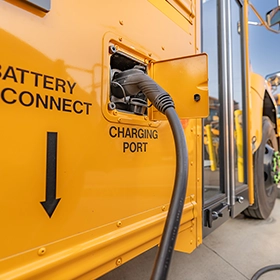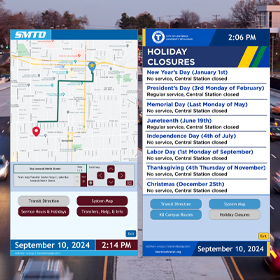Home » News & Resources » Public Transit » Pre-Pandemic Levels of Transit Ridership, Are We There Yet?

Pre-Pandemic Levels of Transit Ridership, Are We There Yet?
After over 3 years, transit ridership finally is reaching closer to pre-pandemic levels; but it hasn’t been without a few challenges. The biggest challenge public transit is currently facing is the amount of people still working remotely on a frequent basis, if not fully remote.
Pre-Pandemic Levels of Transit Ridership, Are We There Yet?
Published: 08/31/2023

After over 3 years, transit ridership finally is reaching closer to pre-pandemic levels; but it hasn’t been without a few challenges. The biggest challenge public transit is currently facing is the amount of people still working remotely on a frequent basis, if not fully remote.
Transit agencies had to rethink their costs, schedule and other factors in order to entice people to go back to using public transit. From low cost to even free fares, some transit agencies have managed to bounce back in order to boost ridership.
The DASH bus system reported an all-time high record of 4.5 million boardings in the 2023 fiscal year. In order to boost ridership, this transit agency launched a fare-free, new network back in September 2021. It became the first transit agency to reach pre-pandemic levels.
Other transit agencies followed suit, or at least, for a limited time. Virginia Railway Express (VRE) had a fare-free September back in 2022. It currently ended its Fare-Free Fridays on September 1st. OmniRide also implemented free fares on certain days; along with other transit systems.
Thanks to the agencies’ efforts, the Washington DC area leads in transit recovery in the nation. When it comes to bus systems, Metro buses are third place in growth with a 41% growth in ridership.
Still, it has been an uphill battle for public transit to be back in pre-pandemic levels of ridership. Many commuters have been enjoying remote work, some permanently.
Since the COVID-19 started, the Federal Government relaxed their telework schedules, allowing federal workers to work remotely full time. Currently, the federal government has been attempting to bring back their employees to work onsite.
The Biden Administration has been pushing to get employees to return back to the office this fall. Some federal agencies have some specific direction for their employees. For example, the FAA wants to increase work onsite to at least three days a week by October 9th.
This direction may help businesses in downtown areas and major cities that were negatively impacted since the COVID-19 pandemic. An example is the food industry; with the majority of the workforce teleworking, their sales went down dramatically.
The past 3 years have been very challenging for public transit overall. As more people return to in person work, ridership will increase. Transit agencies will eventually recover some of the losses they had since 2020.
Categories
Public TransitTransit Ridership
Mask Mandate
Commuters/Commuting
Transit Display/Digital Signage
Accessibility Commuter Rail
Recent Posts

Electric School Buses Driving Towards a Greener Future
Electric school buses are currently on high demand, and following the trend of public transit with the transition to clean energy.

Redmon Transit Display Expands Digital Signage Capabilities
Redmon's Transit Display, a leading provider of digital signage solutions for public transportation, is excited to announce the release of new features for its industry-leading digital signage system.